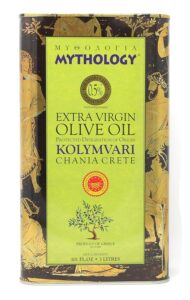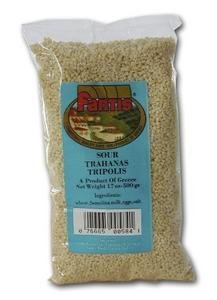Have you ever wondered how a simple dish like souvlaki has evolved from ancient marketplaces to become a staple of modern Greek street food trucks? The journey of Greek street food is a captivating story of tradition meeting innovation, rooted deep in the heart of Greek cuisine and street food history. From the bustling agoras of ancient Greece to today’s vibrant urban landscapes, the evolution of Greek street food reflects the rich tapestry of history, culture, and societal changes that have shaped this beloved culinary tradition.


Key Takeaways – Greek Street Food
- The evolution of Greek street food dates back to ancient marketplaces, known as agoras.
- Historical events and societal changes have greatly influenced Greek cuisine.
- Modern Greek street food blends traditional recipes with contemporary flair.
- Economic, political, and cultural shifts have played a significant role in this evolution.
- Souvlaki and gyros represent the timeless favorites of Greek street food.
- The rise of food trucks has revolutionized the accessibility and variety of Greek street food.
- Greek street food continues to be an integral part of daily life, festivals, and events.
Introduction to Greek Street Food
Greek street food introduction paints a vivid picture of a culinary tradition deeply rooted in history and culture. It marries flavors, ingredients, and techniques developed over millennia, evolving from the bustling marketplaces of ancient Greece to contemporary urban food trucks. This delicious journey not only highlights historical Greek cuisine but also showcases the profound cultural food influence that has shaped and continues to inform the modern palate.
The Historical Significance
The essence of Greek street food today can be traced back to the vibrant agora, the central public spaces in ancient Greek cities. These markets were a hub of commercial and social activity, where people gathered not only to shop but also to share meals. From simple pita bread to freshly grilled meats, historical Greek cuisine offered a plethora of flavors that were both accessible and nourishing. The foods and culinary practices from these early times laid the foundation for today’s Greek street food, emphasizing the importance of fresh, local ingredients and communal dining.
Cultural Impact on Modern Food
Greek street food introduction isn’t just about tasty bites; it’s about understanding how food intertwines with culture. Modern Greek street food is a fusion of ancient culinary traditions and contemporary influences, echoing the country’s rich heritage. Cultural food influence plays a significant role in this evolution, as traditional dishes like souvlaki and gyros adapt to modern tastes without losing their authentic essence. This cultural amalgamation makes Greek street food both timeless and innovative, continually thrilling food enthusiasts worldwide.
| Ancient Greek Street Food | Modern Greek Street Food |
|---|---|
| Freshly baked bread | Souvlaki wraps |
| Grilled fish and meats | Gyros with varied fillings |
| Local cheeses | Cheese-filled pastries |
| Olives and dried fruits | Modern spins on traditional salads |
| Herculean feasts | On-the-go delicacies |
Origins in Ancient Markets
Walking through the bustling lanes of the ancient Greek markets, one could easily be swept away by the sights and scents that define Greece’s rich culinary history. These marketplaces were hubs of trade and social interaction, offering a plethora of traditional Greek ingredients that formed the backbone of what we now consider classic Greek dishes.
Marketplaces in Ancient Greece
The marketplaces, referred to as agoras, were the epicenters of ancient Greek city life. They were not just commercial centers but also spaces where people gathered to discuss politics, philosophy, and daily events. Vendors sold a variety of goods ranging from fresh produce to artisan products. It’s fascinating to envision the lively exchange of goods and ideas that took place in these spaces.
Common Ingredients and Dishes
Among the treasures of ancient agoras were numerous traditional Greek ingredients that continue to be central to Greek cuisine. Olives, for example, were not only a dietary staple but also had significant economic value. Cheese, particularly feta, was another essential ingredient, adored for its versatility and rich flavor. Bread, often made from barley, provided the perfect accompaniment to these ingredients, making simple yet satisfying meals.
Drawing from these rich markets, a variety of classic Greek dishes emerged. Dishes such as mastos, a forerunner to modern cheese plates, and pultes, an early form of porridge, highlight the ingenuity and resourcefulness of ancient Greek street food culture. Each dish showcased the availability of fresh, local produce and the culinary heritage that has significantly influenced contemporary Greek street food.
| Ingredient | Modern Equivalent | Historical Significance |
|---|---|---|
| Olives | All types of olives | Economic and dietary staple |
| Cheese | Feta | Versatility and flavor |
| Bread | Barley bread | Essential side dish |
| Wine | Local wines | Integral to social occasions |
The Transition Through Greek History
As we journey through Greek culinary history, it’s fascinating to observe how street food has evolved over the centuries. The influence of various eras, from the Byzantine Empire to the Ottoman occupation, played a pivotal role in shaping what we now recognize as Greek street food.
The Byzantine era brought an influx of spices, imported from the far reaches of the empire, which significantly altered the flavor profiles of traditional recipes. This period was a cornerstone in the street food evolution, introducing exotic tastes that became staples in the Greek diet.
When the Ottomans arrived, the historical cuisine changes were noteworthy. New cooking techniques and ingredients were integrated into everyday meals, enriching the diversity of flavors available on the streets. Introduced during this time were popular foods such as döner kebabs and various pastries that have since been assimilated into Greek food culture.
Let’s take a closer look at how these periods compared:
| Era | Main Influences | Key Ingredients Introduced |
|---|---|---|
| Byzantine | Trade with Middle East and Asia | Spices, honey, fruits |
| Ottoman | Conquest and Integration | Yogurt, baklava, eggplant |
The resilient nature of Greek street food is evident in its capacity to incorporate diverse elements while retaining its unique essence. As one examines the historical cuisine changes through different epochs, it becomes clear how adaptable and robust Greek food culture is, blending various influences into a harmonious culinary experience.
This street food evolution underlines a broader narrative of resilience, demonstrating how Greek cuisine has continually adapted through adversity and prosperity. It’s not just about the food itself but the rich history it represents.
Modern Greek Street Food Trends
Greek street food has evolved dramatically, incorporating a delightful mix of traditional flavors and *global culinary influence*. The bustling streets of Athens and Thessaloniki have become vibrant canvases showcasing some of the most delectable and diverse dishes you can imagine.
Popular Modern Dishes
When you stroll through the streets of Greece today, you’ll encounter a myriad of dishes that exemplify modern Greek food trends. Some of the favorites include:
- Loukoumades: These golden dough balls drizzled with honey and sprinkled with nuts are making a sweet comeback.
- Bougatsa: A favorite phyllo pastry filled with custard or cheese, reflecting both tradition and innovation.
- Koulouri: Often enjoyed as a quick breakfast, this sesame seed-covered bread ring is perfect for on-the-go munching.
- Seafood Meze: Fresh catches from the Aegean Sea, such as grilled octopus, are now served as bite-sized street eats.
- Vegan Souvlaki: Traditional souvlaki with a vegan twist, featuring plant-based alternatives and fresh veggies.
Influence of Global Cuisines
The *contemporary Greek street eats* are not just confined to local traditions but are a testament to the country’s embracement of international flavors. You’ll find:
- Sushi Souvlaki: Merging Japanese techniques with Greek ingredients, this unique dish is grabbing attention.
- Burger Gyros: This fusion dish marries the iconic American burger with the beloved Greek gyros.
- Falafel Wraps: Middle Eastern influences are evident in the growing popularity of these chickpea-based delights.
- Mexican Tacos: Infused with Greek spices, these tacos offer a spicy and flavorful twist on a classic Mexican favorite.
The evolution of Greek street food illustrates not only the rich tapestry of its cultural heritage but also its openness to *global culinary influence*. This delicious blend ensures that traditional flavors continue to thrive while embracing new, innovative twists.
Key Street Foods: Souvlaki and Gyros
When it comes to quintessential Greek street foods, few are celebrated as fervently as souvlaki and gyros. These dishes are not just meals; they are cultural icons, deeply embedded in the hearts of both Greeks and food enthusiasts worldwide. Their widespread popularity stems from their rich history, mouthwatering flavors, and the comforting nostalgia they evoke.
Souvlaki: A Timeless Favorite
Souvlaki, with its succulent skewers of marinated meat, has been a staple of Greek street food for centuries. Traditionally grilled over an open flame, souvlaki is often served with pita, tomatoes, onions, and a dollop of tzatziki sauce. Its versatility and simplicity have made souvlaki a timeless favorite, offering a taste that is both authentically Greek and universally appealing.
Gyros: A Modern Twist
While souvlaki has historical roots, gyros represents a modern twist on Greek street cuisine. Typically made from stacked meat cooked on a vertical rotisserie, gyros are sliced and served with similar accompaniments to souvlaki. This dish has gained international fame for its unique preparation method and delicious flavors, becoming synonymous with Greek street foods worldwide.
Comparing these two quintessential Greek street foods highlights both their shared heritage and unique characteristics:
| Aspect | Souvlaki | Gyros |
|---|---|---|
| Cooking Method | Grilled on skewers | Rotisserie |
| Common Meats | Pork, Chicken, Lamb | Pork, Chicken, Beef |
| Serving Style | Served on skewers or in pita | Sliced in pita or on a plate |
| Popularity | Traditional favorite | Modern staple |
Understanding souvlaki and gyros in tandem offers a deeper appreciation of Greek street food culture. Both dishes showcase the ingenuity and flavor profiles that have made Greek cuisine beloved worldwide, making them true representatives of quintessential Greek street foods.
Greek Street Food Culture
Greek food culture is not just about what people eat but also how they enjoy their meals. The street food lifestyle in Greece forms an integral part of daily life, bringing both convenience and vibrant social interaction to the forefront. From bustling city centers to quiet villages, the presence of street food vendors is a common and cherished sight. Let’s delve deeper into the significant role street food plays in the daily life of Greeks and how it ties into their rich culinary traditions.
Street Food’s Role in Daily Life
On any given day, you can see locals stopping by their favorite street food stalls for a quick bite. Whether it’s grabbing a souvlaki on the way to work or enjoying a late-night gyro with friends, street food is as much about the experience as it is about the food itself. It embodies the essence of Greek food culture—simple, fresh, and full of flavor. Street food vendors form the backbone of the street food lifestyle, bringing people together in shared moments of culinary delight.
Festivals and Events
The celebration of street food extends far beyond everyday life and finds a special place in various culinary events and festivals throughout Greece. These events often feature an array of street food stalls and food trucks, showcasing both traditional and innovative offerings. For instance, the Thessaloniki Street Food Festival is a testament to the city’s vibrant street food scene, drawing crowds who revel in the diverse flavors and engaging atmosphere.
Greece’s numerous culinary events are perfect opportunities to experience the unifying power of street food. These gatherings not only celebrate the rich heritage of Greek food culture but also foster a sense of community and shared joy. Through festivals and events, the importance of street food in Greek society is continually reaffirmed, further embedding it into the national identity.
| Event | Location | Specialty |
|---|---|---|
| Thessaloniki Street Food Festival | Thessaloniki | Fusion Street Foods |
| Athens Street Food Festival | Athens | Traditional & Modern Street Eats |
| Crete Food Festival | Crete | Local Delicacies |
The Rise of Food Trucks in Greece
Food trucks in Greece have fast become a prominent feature in the vibrant landscape of Greek street food. These mobile food vendors have sparked a wave of street food innovation, offering a fresh twist on traditional flavors and culinary experiences.
The recent boom in food trucks in Greece is a testament to how these mobile eateries are reshaping the street food scene. Entrepreneurs are embracing the flexibility and mobility that food trucks provide, allowing them to reach a broader audience and experiment with creative food options. This adaptability is crucial in a fast-paced food culture where tastes and trends continuously evolve.
Consider the variety that mobile food vendors bring to the streets of Greece. From classic souvlaki and gyros to inventive dishes like feta-stuffed burgers and moussaka tacos, these food trucks infuse the essence of Greek cuisine with modern flair. They not only preserve authentic flavors but also innovate, making street food accessible and exciting for locals and tourists alike.
The success of these food trucks is also driven by their strategic locations and ability to participate in different events and festivals. Whether parked by bustling city squares or coastal promenades, food trucks in Greece offer the convenience of high-quality, gourmet meals on the go. This convenience, coupled with their unique and varied menus, makes them a favorite among food enthusiasts looking for both traditional and novel street food experiences.
Food trucks are revolutionizing Greek street food by merging tradition with innovation. Their flexibility allows for an ever-changing menu that caters to the dynamic tastes of today’s consumers.
In conclusion, as street food innovation continues to thrive, these food trucks embody the perfect blend of heritage and creativity. They are not just modern eateries on wheels; they are a celebration of Greek culinary artistry, adapting to the evolving food culture while honoring its rich past.
| Aspect | Traditional Street Food | Food Trucks |
|---|---|---|
| Mobility | Fixed Locations | Highly Mobile |
| Menu Flexibility | Standardized Menus | Dynamic and Innovative Menus |
| Accessibility | Local Markets | City Squares, Events, Festivals |
| Customer Experience | Traditional Service | Modern, Quick Service |
Comparison: Ancient Markets vs Modern Food Trucks
The evolution of Greek street food offers a fascinating comparison between ancient markets and modern food trucks. This section will delve into the various dimensions of this transition.
Accessibility and Convenience
One of the significant differences in the food truck vs. ancient market debate is the aspect of street food accessibility. Ancient markets were central gathering points, but required people to travel to specific locations, often tied to social, religious, or commercial events. Conversely, modern food trucks bring culinary delights directly to the people, offering much greater convenience. These mobile eateries can set up shop virtually anywhere, enhancing street food accessibility for all.
Variety and Innovation
The array of culinary offerings available at ancient markets versus those at modern food trucks highlights how culinary innovation has evolved. Ancient marketplaces were replete with traditional dishes, crafted using time-honored recipes and local ingredients. Now, today’s food trucks take these traditional flavors and infuse them with modern twists, driven by a spirit of culinary innovation. Food enthusiasts can enjoy fusion cuisine, new flavor combinations, and innovative cooking techniques, all thanks to the modern, agile nature of food trucks.
| Aspect | Ancient Markets | Modern Food Trucks |
|---|---|---|
| Street Food Accessibility | Central locations, event-based | Mobile, ubiquitous |
| Variety | Traditional dishes | Fusion and innovative cuisine |
| Convenience | Static, requires travel | Dynamic, brought to the customer |
Why Greek Street Food Continues to Thrill
There’s something irresistibly captivating about Greek street food that keeps people coming back for more. The Greek street food appeal lies in its incredible fusion of flavors, deeply rooted tradition, and a culinary passion that has been preserved through centuries. Whether you’re biting into a savory souvlaki skewer or indulging in a hearty gyro wrap, the vibrant and diverse flavors tell a story of an enduring food tradition that’s hard to find elsewhere.
One of the most compelling reasons Greek street food continues to thrill both locals and tourists is its dedication to high-quality, fresh ingredients. With a focus on olive oil, fresh herbs, and local produce, every bite is a celebration of Greek culinary heritage. It’s this culinary passion that brings the very essence of Greece into every dish, offering a unique and authentic experience that has been cherished for generations.
Moreover, Greek street food isn’t just about taste; it’s about the communal experience. Street food vendors often serve as local gathering spots where stories are exchanged, and bonds are strengthened. This social aspect of enjoying food together enriches the overall appeal and keeps the tradition vibrant and alive. In essence, the Greek street food appeal is a harmonious blend of quality, tradition, and community, making it a timeless favorite that continually excites the palate and nourishes the soul.
FAQ
What is the evolution of Greek street food from ancient markets to modern food trucks?
Why is Greek street food significant from a cultural perspective?
What were the common ingredients in ancient Greek markets?
How has Greek street food evolved through history?
What are some popular modern Greek street food dishes?
What is the difference between souvlaki and gyros?
How does street food fit into the daily life of Greeks?
What role do food trucks play in the contemporary Greek street food scene?
How do ancient markets compare to modern food trucks in terms of street food culture?
Why does Greek street food continue to be appealing?


Grill Philosophy Greek Recipes and Grilling
YouTube Channel: Grill Philosophy Explore traditional Greek recipes and grilling techniques with Grill Philosophy on Cooking with Greek People.












Author: Bob
With over 20 years in Bioinformatics and AI in Molecular Diagnostics, Bob Stavrou advises BiCos, focusing on authenticating OLIVE OIL DNA. He's also a passionate contributor to YouTube Cooking with Greek People and appeared on Greek TV show Savvatokiriako Me Ton Manesi, bridging science and culinary arts. Watch it on Alpha TV.




